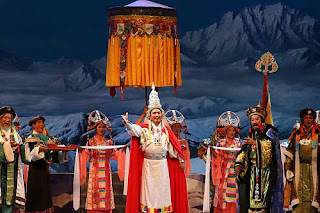UNESCO CULTURAL HERITAGE
Wooden arch bridges are found in Fujian Province and Zhejiang Province, along China’s south-east coast. The traditional design and practices for building these bridges combine the use of wood, traditional architectural tools, craftsmanship, the core technologies of ‘beam-weaving’ and mortise and tenon joints, and an experienced woodworker’s understanding of different environments and the necessary structural mechanics. The carpentry is directed by a woodworking master and implemented by other woodworkers. The craftsmanship is passed on orally and through personal demonstration, or from one generation to another by masters teaching apprentices or relatives within a clan in accordance with strict procedures. These clans play an irreplaceable role in building, maintaining and protecting the bridges. As carriers of traditional craftsmanship the arch bridges function as both communication tools and venues. They are important gathering places for local residents to exchange information, entertain, worship and deepen relationships and cultural identity. The cultural space created by traditional Chinese arch bridges has provided an environment for encouraging communication, understanding and respect among human beings. The tradition has declined however in recent years due to rapid urbanization, scarcity of timber and lack of available construction space, all of which combine to threaten its transmission and survival.
Inscribed in 2009 (4.COM) on the List of Intangible Cultural Heritage in Need of Urgent Safeguarding
© Text: UNESCO, Image: Difa Gong
29 April 2012
15 April 2012
Tibetan opera
UNESCO CULTURAL HERITAGE
Tibetan opera, the most popular traditional opera of minority ethnic groups in China, is a comprehensive art combining folk song, dance, storytelling, chant, acrobatics and religious performance. Most popular in the Qinghai-Tibetan Plateau in western China, the performance begins with a prayer ceremony, including the cleansing of the stage by hunters and blessings by the elder, and concludes with another blessing. The heart of the opera is a drama narrated by a single speaker and enacted by performers supported by groups of singers, dancers and acrobats. Actors wear traditional masks of a variety of shapes and colours that contrast with their simple makeup. Performances may take place in public squares or temples (or, today, on stage), with the centre of the space marked by a tree placed on the ground, wrapped in colourful paper and surrounded by purified water and theatrical props. Rooted in Buddhist teachings, the stories told in Tibetan opera recount the triumph of good and the punishment of evil and therefore serve a social teaching function for the community. This multifaceted representative of Tibetan art and cultural heritage also acts as a bridge among Tibetans in different parts of the country, promoting ethnic unity and pride.
Inscribed in 2009 (4.COM) on the Representative List of the Intangible Cultural Heritage of Humanity
© Text: UNESCO, Image: Tibetan Troupe
Tibetan opera, the most popular traditional opera of minority ethnic groups in China, is a comprehensive art combining folk song, dance, storytelling, chant, acrobatics and religious performance. Most popular in the Qinghai-Tibetan Plateau in western China, the performance begins with a prayer ceremony, including the cleansing of the stage by hunters and blessings by the elder, and concludes with another blessing. The heart of the opera is a drama narrated by a single speaker and enacted by performers supported by groups of singers, dancers and acrobats. Actors wear traditional masks of a variety of shapes and colours that contrast with their simple makeup. Performances may take place in public squares or temples (or, today, on stage), with the centre of the space marked by a tree placed on the ground, wrapped in colourful paper and surrounded by purified water and theatrical props. Rooted in Buddhist teachings, the stories told in Tibetan opera recount the triumph of good and the punishment of evil and therefore serve a social teaching function for the community. This multifaceted representative of Tibetan art and cultural heritage also acts as a bridge among Tibetans in different parts of the country, promoting ethnic unity and pride.
Inscribed in 2009 (4.COM) on the Representative List of the Intangible Cultural Heritage of Humanity
© Text: UNESCO, Image: Tibetan Troupe
1 April 2012
Silk craftmanship in China
UNESCO CULTURAL HERITAGE
Sericulture and silk craftsmanship of China, based in Zhejiang and Jiangsu Provinces near Shanghai and Chengdu in Sichuan Province, have an ancient history. Traditionally an important role for women in the economy of rural regions, silk-making encompasses planting mulberry, raising silkworms, unreeling silk, making thread, and designing and weaving fabric. It has been handed down within families and through apprenticeship, with techniques often spreading within local groups. The life cycle of the silkworm was seen as representing the life, death and rebirth of human beings. In the ponds that dot the villages, silkworm waste is fed to fishes, while mud from the ponds fertilizes the mulberry trees, and the leaves in turn feed the silkworms. Near the beginning of the lunar year, silkworm farmers invite artisans into their homes to perform the story of the Goddess of the Silkworm, to ward off evil and ensure a bountiful harvest. Every April, female silkworm farmers adorn themselves with colourful flowers made of silk or paper and make harvest offerings as part of the Silkworm Flower festival. Silk touches the lives of rural Chinese in more material ways, too, in the form of the silk clothes, quilts, umbrellas, fans and flowers that punctuate everyday life.
Inscribed in 2009 (4.COM) on the Representative List of the Intangible Cultural Heritage of Humanity
© Text: UNESCO, Image: China National Silk Museum
Sericulture and silk craftsmanship of China, based in Zhejiang and Jiangsu Provinces near Shanghai and Chengdu in Sichuan Province, have an ancient history. Traditionally an important role for women in the economy of rural regions, silk-making encompasses planting mulberry, raising silkworms, unreeling silk, making thread, and designing and weaving fabric. It has been handed down within families and through apprenticeship, with techniques often spreading within local groups. The life cycle of the silkworm was seen as representing the life, death and rebirth of human beings. In the ponds that dot the villages, silkworm waste is fed to fishes, while mud from the ponds fertilizes the mulberry trees, and the leaves in turn feed the silkworms. Near the beginning of the lunar year, silkworm farmers invite artisans into their homes to perform the story of the Goddess of the Silkworm, to ward off evil and ensure a bountiful harvest. Every April, female silkworm farmers adorn themselves with colourful flowers made of silk or paper and make harvest offerings as part of the Silkworm Flower festival. Silk touches the lives of rural Chinese in more material ways, too, in the form of the silk clothes, quilts, umbrellas, fans and flowers that punctuate everyday life.
Inscribed in 2009 (4.COM) on the Representative List of the Intangible Cultural Heritage of Humanity
© Text: UNESCO, Image: China National Silk Museum
Subscribe to:
Posts (Atom)



